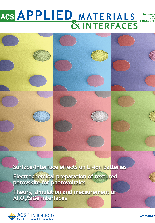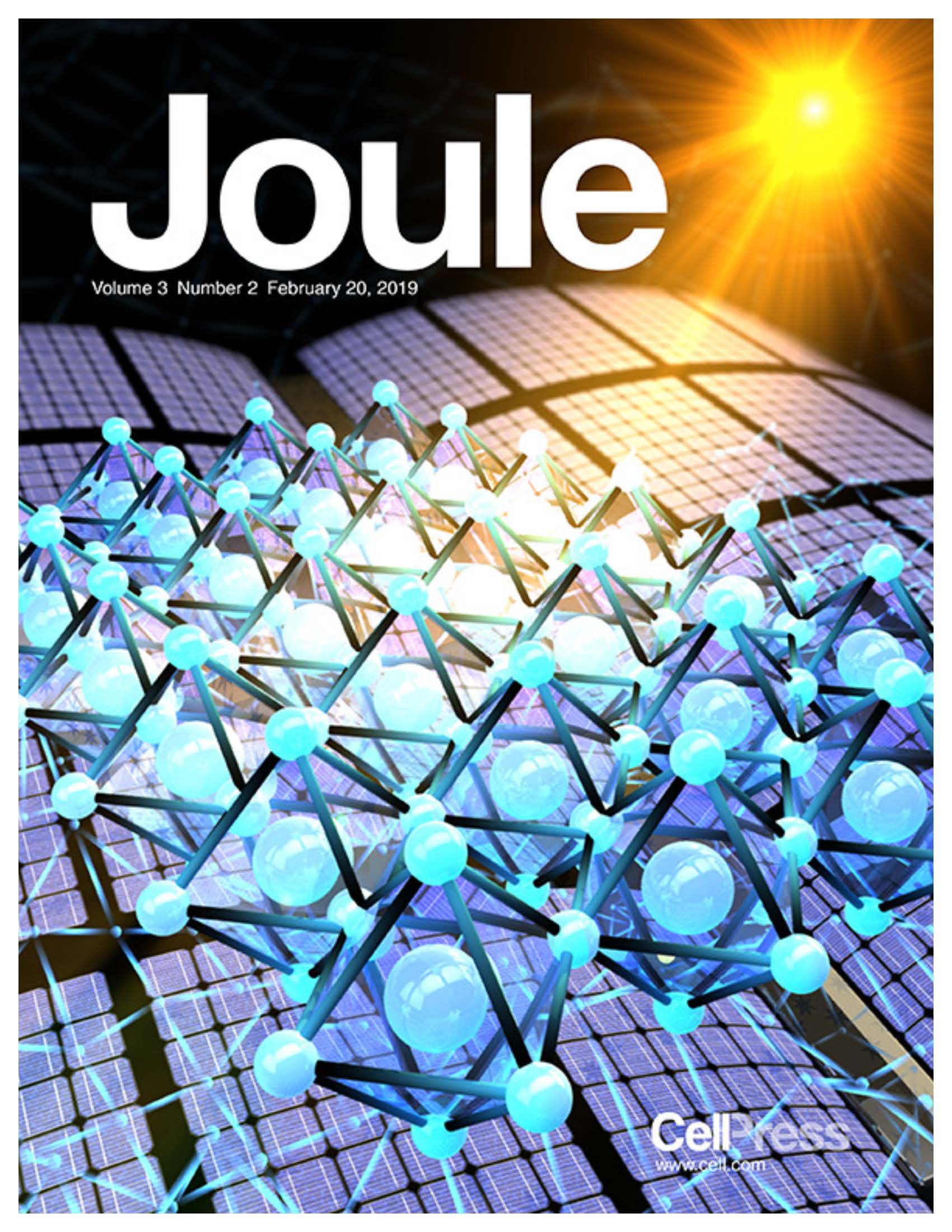News Story
The “Warhol Batteries”

Dec 2, 2015 Cover of ACS Applied Matierials and Interfaces
From life-saving medical devices used in remote areas to electric and hybrid vehicles to the smartphones that keep our schedules and lives running smoothly, the entire world is increasingly dependent on mobile electronic devices. More accurately, we are increasingly dependent on the batteries that keep them running. Though much progress has been made in improving the performance, lifetime, and safety of rechargeable batteries, there are still significant limitations that need to be addressed.
In work featured on the December 2 cover of ACS Applied Materials and Interfaces, the Leite (IREAP/MSE) research group is working to fabricate new materials combinations that would, eventually, exponentially improve the performance and safety of rechargeable batteries. Usually rechargeable batteries contain a liquid electrolyte, resulting in severe design and safety constraints. A liquid electrolyte poses two main problems: first, the electrolyte is a flammable liquid (for example, the battery system on the Boeing 787 Dreamliner airplanes caught on fire several times in 2012-2013); second, it prevents the miniaturization of the battery device itself, restricting its usage in ultra-compact electronics. To overcome these limitations, all-solid-state rechargeable batteries are being developed using a variety of materials.
When a battery-powered device is activated, its batteries produce electrical charge through chemical reactions that cause a build-up of electrons at the anode (-). The electrolyte in the battery prevents these electrons from moving to the cathode (+) and the build-up forces the electrons out of the battery and into the electronic device, completing the circuit. Research and experience shows that Lithium-ion batteries are a promising option for the development of safe, high performance devices. Lithium has the highest electrochemical potential, delivers the largest energy density per weight, and is the lightest of all metals (at standard temperature and pressure). The improvement of solid-state energy storage devices requires the understanding of the new interfaces formed upon cycling (battery usage). Cycling can involve non-reversible chemical reactions between the active layers composing the device, causing and/or contributing to the limited rechargeable lifetime and performance of batteries.
The Leite research group at UMD is developing research to advance the understanding of how the solid interfaces formed upon lithiation affect the capacity of all-solid-state Li-ion batteries, and to design/fabricate novel nano-architectures for high performance devices. In the work highlighted on the front cover of ACS Applied Materials and Interfaces, Gong, et al. (IREAP/MSE) have demonstrated the correlation between the morphological, chemical, and electrical changes of the surface of thin-film devices with Aluminum (Al) negative electrodes, a promising alternative for ultra-lightweight portable devices. Because Al oxidizes very easily, it was critical to characterize the compositional, structural and electrical properties of this layer. The group discovered that upon cycling the device a stable Al−Li−O alloy forms at the stress-free top surface of the electrode, causing loss in surface conductivity and, therefore, rapid capacity fade. By identifying the chemical reactions that take place within the electrode interfaces, they can now search for alternative materials that could be implemented as a protective layer on the Al node. They also showed that thin-film Si electrodes exhibit extremely stable cycling, maintaining >92% of its capacity after 100 cycles, with Coulombic efficiency of 98%, as a result of the ultra-fast diffusion of Li within Si (∼10 orders of magnitude faster in Si compared to Al).
The “Warhol Batteries” image highlighted on the cover of ACS Appl. Materials & Interfaces is a collage of SEM images illustrating the morphological and chemical changes that take place on Al electrode batteries upon lithiation, and is a tribute to Andy Warhol’s painting of John Lennon (who would have turned 75 years in Oct).
The Leite group will continue working on developing new nano-architectures for solid-state, Li-ion batteries. Meanwhile, that one seat on the metro train with an outlet will remain prime public transportation real estate, reserved for those with less than 5% battery.
Published December 2, 2015












